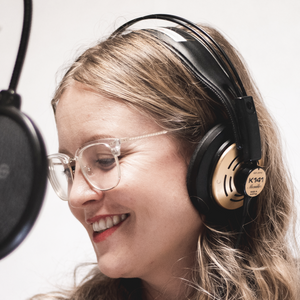"I wanted to show, our actions matter.”
To round out the year, RNZ caught up with people who have been front and centre of the news cycle. In this article, microbiologist Dr Siouxsie Wiles shares her one regret, her hardest moments, and how she sees 2021 playing out.
 Photo: RNZ / Dan Cook
Photo: RNZ / Dan Cook
It’s January 20, 2020 and leading RNZ’s 4pm bulletin is news that Chinese authorities have reported 139 new cases of a mysterious virus in two days.
It’s the first confirmation of the coronavirus infection outside Wuhan. Microbiologist Dr Siouxsie Wiles is on the line to explain what the discovery means: “It’s a ‘watch this space’, but at the moment, signs are - it’s not going to be as bad as SARS.”
Eleven months on - does she think scientists were naive in the beginning?
“We just didn’t know, right? What we know now is there was suppression of information about just how bad it was, which is very unfortunate.”
She was looking for reports of frontline healthcare workers getting sick, and clear reports of that didn’t emerge till mid-February.
“I get sent interviews from early January all the time saying YOU SAID THIS, and it’s like well, yeah - that’s what I thought at the time, and then the more evidence you get, then you change your mind. That’s kind of what being a scientist is all about.
“I feel like it fairly quickly went from - this is not going to be a problem, to okay, this is could be a problem, let’s get ready. But trying to do that in a way that didn’t panic people.”
Flatten the curve was ‘the wrong message’
There is one thing that bothers Dr Wiles about her response to the pandemic.
“I do regret our involvement in making the ‘flatten the curve’ message go so viral. It was completely the wrong message for the world to hear. The message the world needed to hear at that early stage was elimination.”
She’s referring to the animated graphic she created with cartoonist Toby Morris and shared on Twitter on March 9, which has since reached more than six million people.
It was adapted from infographics that had been shared by other scientists, based on information from the US Centers for Disease Control and Prevention. But Dr Wiles hadn’t seen any that made everyday people feel like they were part of the solution.
“I wanted to show, our actions matter. You can be part of acting that will help slow the spread of the disease.”
The pair re-did the graphic a few days later to share the elimination message, but the illustration had already gone viral.
She describes her relationship with Mr Morris as “the most incredible partnership of my working career”.
“He has just taken everything we’ve been thinking about, everything we’ve been needing to communicate and he has taken it to a whole ‘nother level, it’s just been such a privilege.”
But the year has also taken its toll. There’s been times she’s felt close to collapse. There have been threatening e-mails. They now go into a folder entitled “harassment” which is forming part of a research project.
“Some of them get progressively nastier … and I’m curious about at which stage it becomes bad enough to act, and can you stop them before it gets to that stage?”
Those e-mails are harder to deal with if she’s already having a bad day.
She’s also has personal fears to deal with as her parents remain in the UK. She cried when UK prime minister Boris Johnson announced a “herd immunity” approach when so little was known about the virus.
“We didn’t know anything about immunity. It seemed like a really stupid strategy - a dangerous strategy to let that run, versus the ‘do your damnedest to stop it’. That strategy works, right. That strategy worked for SARS. And the fact so few countries took that stance meant there was more people around who could spread it, which is what happened. The countries that didn’t cope with it have moved it to the countries that were coping… and it didn’t have to be that way.”
2021: protecting the border
Dr Wiles said it’s likely there will be more than one vaccine, and each may have a different safety profile. If they are “live”, for example, some people may not be able to receive a vaccine at all.
She said the initial focus will probably be on ensuring cases don’t come through the border. That means vaccinating frontline people like port workers, customs staff, and people working in managed isolation facilities.
“Then once we get more, do we protect those who are most likely to get infected, most likely to transmit the infection, or do we vaccinate those who are more vulnerable?”
Despite the race for a vaccine, New Zealand is privileged in that there’s no need to rush into anything, Dr Wiles said. And that’s just as well, because no one has tried to vaccinate the whole country before.
“It’s not going to be, come the first of April, we just open our borders and vaccinate everybody because we’re not going to have those vaccines then.
“I imagine next year will feel quite a lot more like this year than people are thinking.”
But in the meantime, Dr Wiles plans to take a couple of weeks off, build Lego, read, go to the beach and spend time with her family.
About the author

Rachel Thomas is a senior reporter at RNZ.